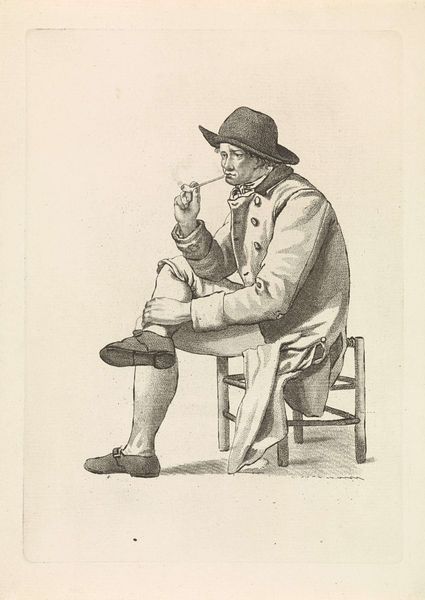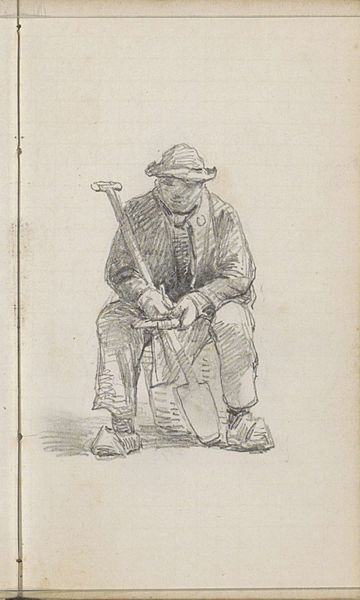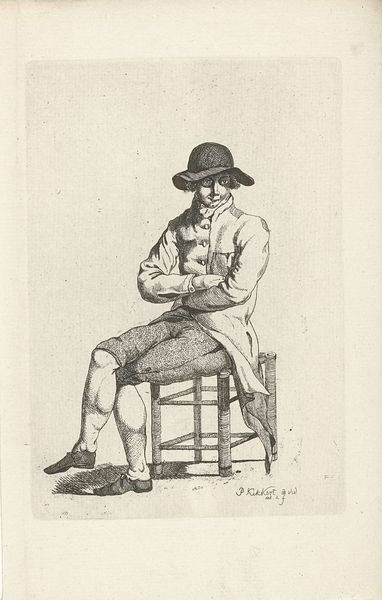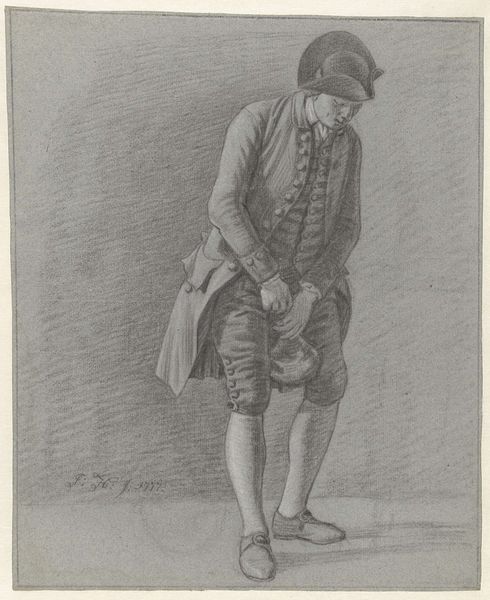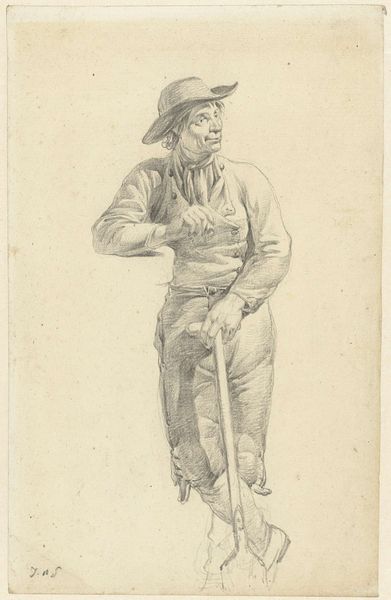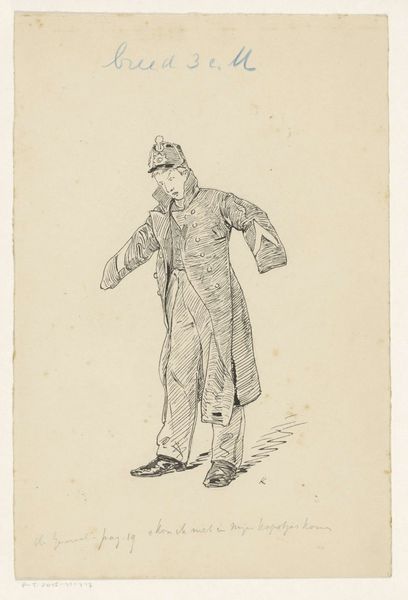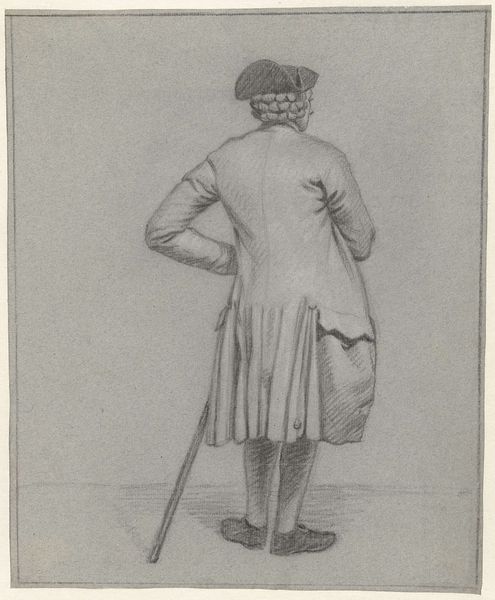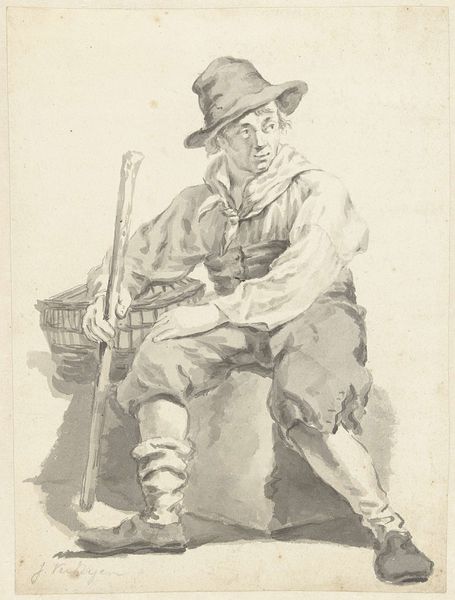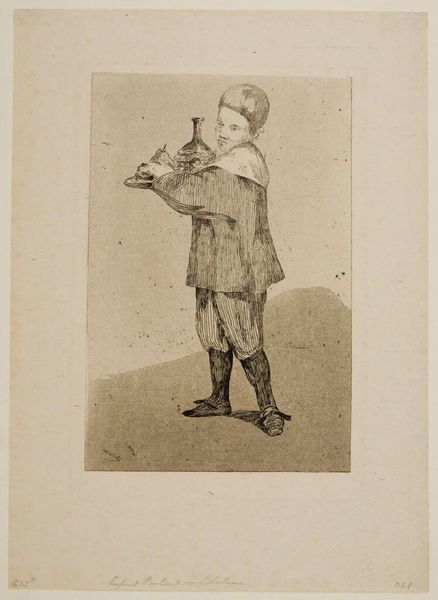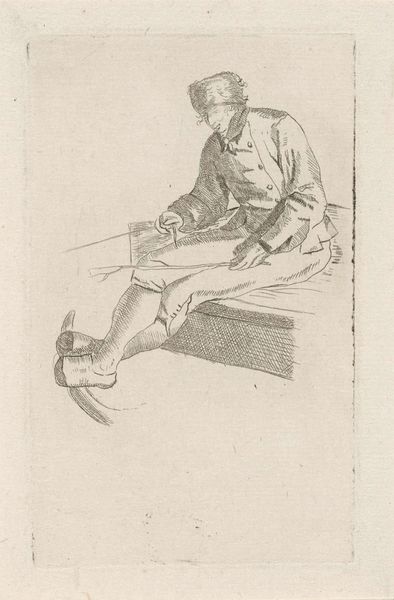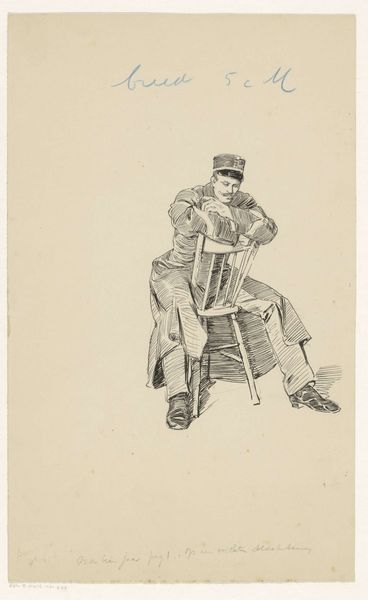
drawing, pencil
#
portrait
#
pencil drawn
#
drawing
#
pencil sketch
#
pencil drawing
#
pencil
#
pencil work
#
genre-painting
#
realism
Dimensions: height 199 mm, width 147 mm
Copyright: Rijks Museum: Open Domain
Editor: This is "Drinkende man zittend op een ton," or "Drinking Man Sitting on a Barrel," a pencil drawing by Mathias de Sallieth, possibly created between 1772 and 1833. It's a simple scene, almost folksy. What do you see in this piece? Curator: Beyond the apparent genre scene, I see a potent commentary on class and labor. Note the subject's clothing, the humble barrel he's perched upon. How might his act of drinking be interpreted as a form of resistance or perhaps escapism against the backdrop of burgeoning industrialization? Editor: Resistance? I hadn’t thought of it that way. Curator: Think about it. This image likely coincided with significant social upheaval. Alcohol consumption was often linked to the working class, viewed by some as a vice, by others as a means of coping with hardship. The artist's choice to depict this scene elevates the ordinary, asking us to consider the subject's humanity. Is he enjoying a moment of respite, or is he trapped in a cycle? Editor: It’s interesting how the simple act of drinking can be loaded with so much social meaning. Does the lack of idealization play into this reading? Curator: Precisely. There's a deliberate lack of romanticism here, reflecting a real-world portrayal of labor. The very medium—pencil—speaks to accessibility, mirroring the subject’s own social standing. It’s a stark contrast to the oil paintings depicting the wealthy elite. Editor: So, it’s not just a snapshot of everyday life but a statement about class, labor, and perhaps even the artist's own social consciousness. Curator: Indeed. Art isn’t created in a vacuum. This drawing invites us to examine the intersections of art, society, and individual experience. Editor: I’ll definitely look at art differently now, considering these layers. Thanks. Curator: The beauty of art lies in its capacity to ignite such dialogues, bridging the historical with our present understanding.
Comments
No comments
Be the first to comment and join the conversation on the ultimate creative platform.

